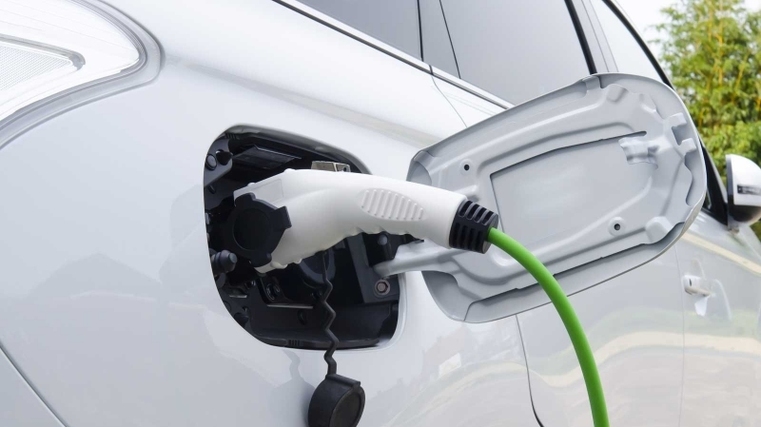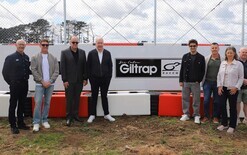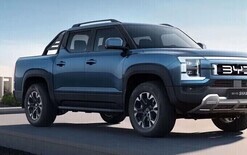Sweden's new EV scheme

Electric vehicle (EV) registrations in Sweden hit a historic high of 18 per cent in the month of the feebate’s implementation.
Sweden’s new ‘Bonus-Malus’ scheme involves buyers of new cars with low CO2 emissions to get an attractive bonus, paid for by a punitive tax levied on vehicles at the opposite end of the spectrum.
Guests at Drive Electric’s global EV update session in Auckland on May 22 from Nordic EV Summit attendees, heard how this new policy is helping Sweden achieve its ambitious target of a 70 per cent reduction in emissions from domestic transport compared with 2010 levels by the end of the next decade.
A critical feature of the scheme is that it is entirely self-funding.
As of last July, buyers of any new petrol or diesel vehicle that emits above 95 grams of CO2 per kilometre are stung with an increased annual ownership tax - the ‘malus’ - for the first three years after registration.
The more you emit, the steeper the levy, so the owner of a diesel-fuelled Volvo with a C02 value of 152g per kilometre, for example, will have to pay 720 euros (NZ$1,230) annually for three years.
By contrast, anyone who buys a car with emissions between zero and 60 grams per kilometre receives a bonus at purchase, with zero emission BEVs and FCEVs receiving a 5,700 euro (NZ$9,738) rebate.
In the month of the feebate’s implementation, EV registrations in Sweden hit a historic high for that time of 18 per cent - now projecting a 20 per cent share of newly sold cars that are chargeable, which is the highest in the world after Norway.
Drive Electric chairman Mark Gilbert praises the ‘Bonus-Malus’ concept and says it would support a similar "feebate" scheme in New Zealand as proposed by the Productivity Commission, penalising polluters and rewarding zero-emission transport introduction.
"We need to give private and fleet buyers very clear signals about what vehicles are bad for the environment and how they can play a positive part in helping New Zealand achieve its lower emissions through the purchase of low emission and EVs," he says. This type of programme will cost the government nothing except its management, and potential front-loading of the fund.
Gilbert says New Zealand’s EV number should go through the 14,000 mark this month, but New Zealand has to triple its average 485 EVs a month to reach the goal of 64,000 EVs by 2021, as set by the previous Government.
"There is not enough happening here to encourage EV uptake and our car consumers aren’t seeing the huge momentum that’s building in other markets towards fossil-free transport of all kinds," he says.
Other speakers at the global EV update, Nick Robilliard from Meridian Energy and Liz Yeaman from transport renewable energy consultancy Retyna says that the recent Nordic EV Summit had several important areas of discussion.
Battery life, charging options, EV trucks and even EV ships, plus the development of an ‘ethical’ battery solution (to replace cobalt) were important issues.
Robilliard likewise was impressed by the Swedish ‘Bonus-Malus’ feebate system, which strikes him as a better fit for this country than the Norwegian approach.
"It’s a really simple measure that helps with the relatively high capital cost of purchasing an EV. It’s just one of many things we need to do to increase EV penetration in New Zealand."
Robilliard also talked about the sense that traditional carmakers appear to be struggling to contend with the rapid rise in digital-native carmakers, especially from China, where sales of battery-powered and plug-ins that run on hybrid gasoline-electric engines are likely to exceed 1.6 million units in 2019. That would make nearly seven out of every 10 vehicles on Chinese roads an EV.
These car makers prioritise software interface and data collection higher than build quality moving "from horsepower to data power", he said.
"Guess what, buyers don’t care. If you look at the huge numbers of EVs being sold, and the margins being made, clearly user experience is driving it, not the traditional ideas we’re stuck with around the car," Robilliard says.
Liz Yeaman told guests at the session about developments in EV trucking and shipping and associated charger technology, plus progress in electric-powered aircraft development - and at the other extreme, cargo e-bikes.
She said she’d noticed a real change in the talk from OEMs between the 2018 and 2019 Nordic summits as they get on board with electrification, going from seeing their car-making history as an advantage, to seeing their traditional methods as a disadvantage against the 400 approximately new entrants into the EV marketplace.
"Some big names are going to fail," she says.
For a full summary of the Nordic EV Summit, plus a whitepaper on the ‘Bonus-Malus’ scheme, click here.





